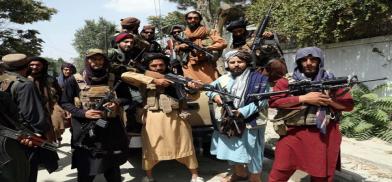Afghanistan under Taliban: A contrasting picture of changed social and political realities
One and a half months in power in Afghanistan, the Taliban has already reinforced people’s feara about the return of the dark days of the nineties as the policies adopted by the group so far have offered few incentives to believe otherwise

One and a half months in power in Afghanistan, the Taliban has already reinforced people’s feara about the return of the dark days of the nineties as the policies adopted by the group so far have offered few incentives to believe otherwise. While the group moved to consolidate its power in the country, the effects of social and political transformation are there for all to see.
Barring sporadic protests-- mostly led by urban educated women--in the streets of Afghan cities, there are very few signs of a nationwide uprising or large-scale protests as anticipated earlier by many. There appears a general realization--at least on the surface-- of a new and changed reality, offering little or no room for views other than those of the ruling dispensation, according to various reports emanating from the country.
Political parties which flourished in the last two decades and had promised resistance in case the Taliban seized power by forces are nowhere to be seen now. Moreover, the prolonged conflict, stretching over four decades, made the idea of armed uprising and resistance against the Taliban unrealistic-- if not unpopular--even among the most anti-Taliban segment of the society.
Economic collapse, humanitarian crisis
The sheer scale of economic collapse and grave humanitarian crisis staring in front of them might have worked politically in favor of the Taliban. For most Afghans, the immediate concern has become just survival.
A report by the United Nations warned 97 percent of Afghans may be pushed below the poverty level in the coming months.
Should the Taliban continue the revenge killings of their former foes and punishing communities over their earlier support for the Afghan government, the circumstances may change with potential assistance from regional countries.
Contrary to its promise of forming an inclusive government, the Taliban’s interim government included no individual from the old political dispensation. The government remains overwhelmingly dominated by Pashtuns, ignoring other minority ethnic groups which account for almost 52 percent of its total population.
There are a few inclusions later from minority ethnic communities but those individuals have been either sympathetic to the Taliban or of non-political background. Women are entirely excluded from the government.
On the rights of women--which has always been one of the most pressing concerns regarding the return of the Taliban - the group’s leadership has offered nothing but empty assurances. Education in secondary schools is resumed without girls. The Taliban says the arrangement is temporary and they will allow girls soon. However, it is worth recalling that in the nineties that same temporary ban lasted over five years until the fall of the Taliban regime itself in 2001.
The space for civil society, independent media, and advocacy groups shrank to the extent that these organizations are fighting a battle for their survival. Offices of several civil society groups have been taken by the Taliban. For instance, the group abolished the Afghanistan Independent Human Rights Commission and the Ministry of Women.
Women working in government offices have been asked to not report back to work--several reports indicated this trend all across Afghanistan. The most striking sign of the Taliban return--that can be seen easily especially in cities-- is the vanishing faces of women from posters on shops, billboards, and paintings on the walls in public space.
Mixed realities in cities and villages
Despite all these changes, there are also some contrasting pictures of this political transition. The streets in Afghan cities which had lately become accustomed to the sounds of explosions and IEDs are now silent. There is a general sense of respite. However, that comes at a great cost of losing freedom and other rights.
For rural Afghanistan that bore the worst brunt of intense fighting resulting in killings and frequent displacement, things are relatively better now. The news of their sons, relatives or someone in the neighborhood getting killed in the fighting, IED explosions, or airstrikes has almost stopped.
A BBC report describes how a woman in Marjah, a town in Southern Helmand province, known for its poppy cultivation, is relieved with the end of the conflict. The war made her a widow not once but four times. Two of her husbands died fighting alongside the Taliban and the rest two died fighting against the Taliban.
All of her husbands were brothers, and she kept marrying younger ones when one died--a common practice in southern Afghanistan. She is now married to the fifth one with much less fear of losing him.
In what could be the most striking contrasting picture depicting mixed realities, a report mentioned how the burial casket business -- that mushroomed amid the decades of war--is on the verge of collapse.
Taliban under illusion?
Despite decimating the erstwhile Afghan government and its security forces almost six weeks ago, the victorious Taliban has yet to come out of its celebratory mood of defeating a superpower (the US).
The group has made no significant compromises or attempted to behave like a ruling political dispensation. With the collapsed economy and banking system, the Taliban appears oblivious to the potential consequences of the unfolding humanitarian crisis on a monstrous scale (SAM)










Post a Comment